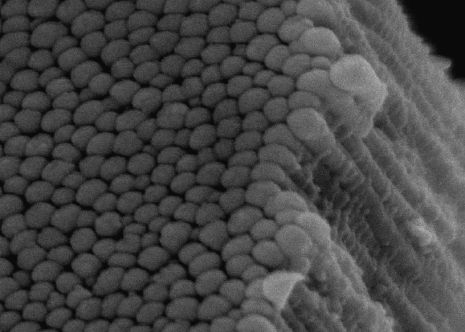Water + Sunlight = Solar Hydrogen
by Jeremy Elton Jacquot, Los Angeles on 08.17.07

We've often heard the media and government officials talk up the potential for a future hydrogen economy to revolutionize the way we consume and produce energy. And while we've seen some promising applications of hydrogen as a fuel source in the last few months, it still seems very unlikely that we'll ever see a hydrogen-based energy market on the scale that some are envisioning. That's not to say that some scientists aren't still trying to gradually make this a reality: Craig Grimes, a professor of electrical engineering at Penn State University, has just announced that he and his team are close — in their words, "only a couple of problems away" — to developing a cheap, viable photoelectrolytic technology, that is one that would split water into hydrogen and oxygen by using sunlight.
While most current hydrogen production processes split hydrogen from natural gas — an inefficient technique that consumes energy and produces greenhouse gases — Grimes' method would rely on thin films made of titanium iron oxide nanotube arrays that could split water under natural light. According to Grimes, this method is much more eco-friendly since it only requires the natural energy of sunlight and doesn't produce GHGs.
Using a form of iron called hematite — a low band gap semiconductor material — they were able to capture a much larger portion of the solar spectrum in their arrays. In their recently published study, they reported a photoconversion rate of 1.5%, the second highest rate ever achieved using an iron oxide-related material.
They are now focusing on optimizing the nanotube architecture to obtain an efficiency closer to the theoretical maximum for materials with hematite (around 12.9%). Grimes is certainly hopeful about the prospects for his group's technology to transcend other production methods: "As I see it, we are a couple of problems away from having something that will revolutionize the field of hydrogen generation by use of solar energy."
Via ::Penn State Materials Research Institute: Revolution in Solar Hydrogen on the Horizon (press release)
© TreeHugger.com 2007 To subscribe or visit go to: http://www.treehugger.com